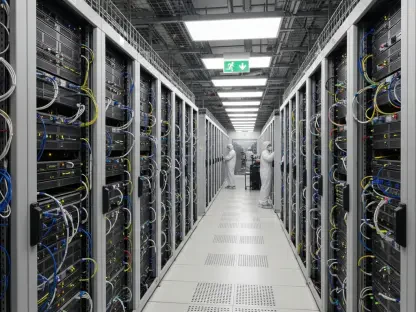Short introduction Today, we’re thrilled to sit down with Vijay Raina, a renowned expert in enterprise SaaS technology and software design. With a deep background in architecture and thought leadership, Vijay has been at the forefront of integrating innovative technologies into business ecosystems. In this conversation, we dive into the transformative world of agentic AI, exploring how it’s reshaping the internet, redefining data trust, and changing the way enterprises approach network performance and resilience.
Can you explain what agentic AI is and how it stands out from other AI technologies we’ve encountered?
Agentic AI refers to autonomous software agents that can make decisions and carry out tasks on their own, without constant human input. Unlike traditional AI, which often focuses on specific functions like pattern recognition or predictions, agentic AI acts more independently, almost like a digital assistant with a mind of its own. It can adapt, prioritize, and execute complex workflows, which makes it a game-changer. Think of it as the difference between a calculator that just crunches numbers and a virtual project manager that plans, delegates, and follows through.
What are some real-world examples of agentic AI that people might interact with or benefit from today?
You’re already seeing agentic AI in areas like personalized shopping assistants that don’t just recommend products but also negotiate deals or track shipments for you. Another example is in financial services, where AI agents monitor transactions in real time, flag potential fraud, and even initiate corrective actions without waiting for a human to step in. These agents are quietly becoming part of our daily digital interactions, handling tasks at a speed and scale humans can’t match.
How is agentic AI fundamentally changing the way we use and think about the internet?
Agentic AI is shifting the internet from a tool we actively use to an environment where autonomous agents operate as users themselves. They’re transacting, deciding, and interacting at machine speed, which means the internet isn’t just a network for human communication anymore—it’s a space for digital entities. This changes everything from how we design networks to what we prioritize, moving away from just speed or bandwidth to ensuring reliability and trust for these non-human users.
The concept of AI agents as ‘digital citizens’ is intriguing. What does that mean in terms of their behavior online?
Calling AI agents ‘digital citizens’ reflects their ability to act with a level of autonomy similar to humans on the internet. They can navigate systems, make choices, and even interact with other agents or services to achieve goals. For example, an AI agent might independently source data from multiple platforms, analyze it, and execute a trade or send a report—all without human oversight. It’s like they have their own digital identity and purpose within the online ecosystem.
What challenges arise when we start treating AI agents as users of the internet in this way?
One big challenge is accountability. If an AI agent makes a bad decision, who’s responsible? There’s also the issue of security—agents can be targets for manipulation or attacks just like human users, but at a much larger scale. Plus, ensuring they don’t overwhelm systems or create unintended consequences, like triggering cascading failures in interdependent networks, requires a whole new level of oversight and design. It’s a bit like managing a population that never sleeps or stops working.
Why is the quality of data so critical for agentic AI to function effectively?
Data is the lifeblood of agentic AI. These agents rely on real-time, accurate information to make decisions. If the data is outdated or wrong, the outcomes can be disastrous—think of a healthcare AI misdiagnosing a patient due to incomplete records, or a financial AI missing fraud because of a corrupted feed. High-quality data isn’t just a nice-to-have; it’s the foundation that determines whether these agents succeed or fail in their tasks.
How can businesses ensure that the data feeding into these AI agents is reliable and trustworthy?
Businesses need to focus on data validation at every step. That means implementing systems to track where data comes from—its provenance—and cross-checking it against multiple sources to confirm accuracy. They should also invest in real-time monitoring to catch delays or corruption early. Building partnerships with trusted data providers and using technologies like blockchain for immutable records can also help. It’s about creating a culture of data integrity that matches the stakes of AI-driven decisions.
Resilience seems to be a major focus for systems supporting agentic AI. Why is that so important?
Resilience matters because agentic AI often operates within highly interconnected systems. Unlike traditional setups with predictable workflows, these agents create dynamic, complex webs of dependencies across APIs, services, and data sources. If one link breaks—a slow server or a failed connection—it can disrupt everything. Resilience ensures that the system can adapt, reroute, or recover quickly, keeping operations smooth even under stress. It’s like building a bridge that can withstand unexpected storms.
How do tiny delays, or latency, impact the performance of agentic AI in critical applications?
Latency can be a dealbreaker for agentic AI, especially in time-sensitive areas like finance or fraud detection. A delay of just a few milliseconds might mean a fraudulent transaction slips through or a stock trade misses the optimal window, costing millions. These agents operate at machine speed, so even small hiccups can compound into big failures. It’s not just about being fast; it’s about being consistently fast to maintain trust and effectiveness in critical operations.
What strategies can companies adopt to minimize these delays and keep AI systems running smoothly?
Companies can tackle latency by optimizing their entire service delivery chain, from data sources to processing nodes. Edge computing—processing data closer to where it’s needed—helps a lot. They should also use predictive analytics to anticipate demand spikes and allocate resources proactively. Investing in high-speed, redundant network paths and regularly stress-testing systems for bottlenecks is key. It’s about designing for the worst-case scenario so delays don’t catch you off guard.
The idea of rethinking capacity planning comes up a lot with agentic AI. Can you explain what that looks like in practice?
Capacity planning for agentic AI goes beyond just having enough bandwidth or server power. It’s about ensuring the entire pipeline—from data ingestion to decision output—can handle the load. In practice, this means modeling usage patterns, predicting when AI agents might spike in activity, and dynamically scaling resources to match. Think of a bank processing thousands of transactions per second; they need to ensure every step, including external dependencies, is optimized so nothing slows down the AI’s workflow.
What is your forecast for how agentic AI will continue to shape the internet and enterprise systems in the coming years?
I believe agentic AI will drive a complete overhaul of how we design and measure internet infrastructure. We’ll see a shift toward metrics like data trustworthiness and decision-readiness becoming as important as uptime. Enterprises will increasingly integrate AI agents into core operations, making resilience and low-latency systems non-negotiable. Over the next few years, I expect a wave of innovation in tools and standards to support these agents, ultimately creating a more autonomous, efficient digital world—but only if we solve the trust and reliability challenges first.









